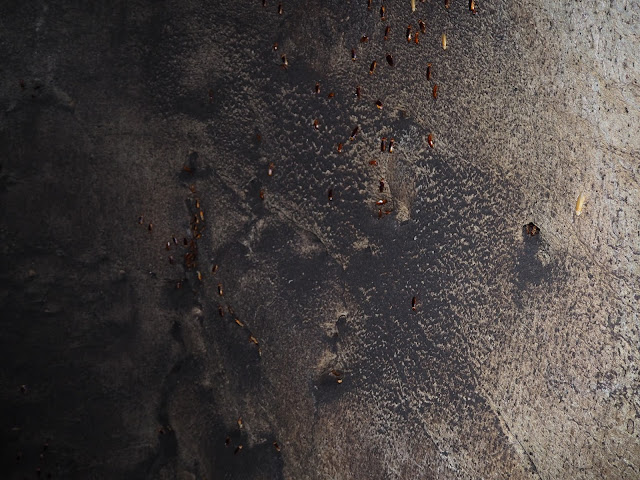I think that many people have the impression that I spent all my time "on holiday". It is true that I am not in paid work whilst being here in Singapore and although I need to spend time doing the usual chores i.e.cooking, cleaning, shopping etc I still have time to try new things like learning to play Mahjong, attend a walking group, visit museums and of course I am extremely lucky to be able to travel and visit many fabulous countries.
A few months after arriving in Singapore I realised that I wouldn't feel satisfied with a daily routine of housework, keeping fit and meeting friends and wanted to do something helpful and meaningful as well so looked for volunteering opportunities.
I started volunteering with the Singapore Riding for the Disabled and have been helping out there for over 18months. (if interested please see the post I did in April 2015) or http://rdasingapore.org
I volunteer here 1 or 2 mornings a week and love it, I enjoy the contact with the horses and it is incredible to see how the therapy sessions benefit the riders. Above is Lucas, the therapy horse that I currently prepare for and then lead in the sessions. He is gorgeous looking but can be rather lazy and cheeky and I have to have me wits about me all the time. Although he is gentle and patient with his disabled riders he has a nasty habit of becoming a bucking bronco when exercised by the stable staff and none of them like to ride him now!
Then about a year ago I also began volunteering with another organisation called DaySpring which provides a "voluntary welfare service to women and youth-at-risk in Singapore". http://dayspring.org.sg It is self funded and operates two centres, the first- a residential treatment centre for abused teenage girls and the second- DaySpring New Life Centre, a residential centre for unsupported pregnant women and mothers of newborn babies. I was so excited when I heard about the New Life Centre were looking for volunteers and completed their application form. I went for a meeting, the centre manager seemed quite pleased when I explained about my nursing and Health Visiting background and asked if I would set up a health education and parenting skills programme to suit the residents.
Unsupported pregnant women can apply to come to the centre and if accepted may live here until their baby is 4 months old (unless they choose to have the baby adopted then they will leave straight after delivery).
I think that pregnant unmarried Singaporean women have a pretty tough time. Some are thought to bring shame upon their family and may be rejected unless they opt to have a termination or adopt the baby. Termination of pregnancy rates in Singapore are reported to be every 1 in 4 or 1 in 5 pregnancies.
Unmarried women who choose to proceed with the pregnancy and are in work currently only qualify for eight weeks of paid maternity leave, instead of the 16 weeks received by married mothers. However this month the government announced that it is looking into changing this so all pregnant women will benefit from 16 weeks maternity leave. They also are not allowed to apply for an HDB (a housing development board apartment) until they are 35years old.
Every Thursday morning I visit the centre and spent time with the residents, discussing subjects such as preparing for labour & delivery, baby care, breast feeding, home safety, child development & mothers mental health. Sometimes they just want to chat and offload and this has given me an insight into some of the issues and difficulties that these young women face.
In a lot of ways it feels a bit like I'm Health Visiting again and by helping out even in a small way helps me feel more settled here plus I have the pleasure of cuddling beautiful newborn babies!
There are many different volunteer opportunities in Singapore, I'm sure there is something to suit everyone whether their interest and skills are in teaching a foreign language, reading with young children, fostering, hospice care, training as a museum guide, selling handicrafts to fund the building of a women's hospital in Cambodian, the possibilities seem almost endless. I feel very happy with my current 'duties' and also lucky to have found a means of continuing with two of my interests i.e. horses and helping young mums with their babies
Every Thursday morning I visit the centre and spent time with the residents, discussing subjects such as preparing for labour & delivery, baby care, breast feeding, home safety, child development & mothers mental health. Sometimes they just want to chat and offload and this has given me an insight into some of the issues and difficulties that these young women face.
In a lot of ways it feels a bit like I'm Health Visiting again and by helping out even in a small way helps me feel more settled here plus I have the pleasure of cuddling beautiful newborn babies!
There are many different volunteer opportunities in Singapore, I'm sure there is something to suit everyone whether their interest and skills are in teaching a foreign language, reading with young children, fostering, hospice care, training as a museum guide, selling handicrafts to fund the building of a women's hospital in Cambodian, the possibilities seem almost endless. I feel very happy with my current 'duties' and also lucky to have found a means of continuing with two of my interests i.e. horses and helping young mums with their babies






































































